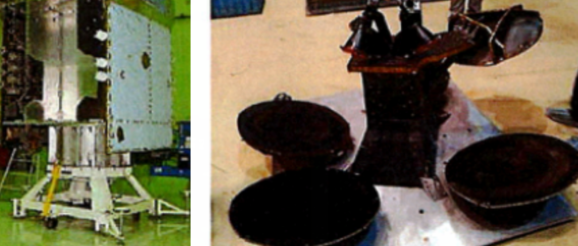Innovation died young: Distinguished Scientist throws light on the dark side of ISRO – Newsroom24x7

Tapan Misra
We have a common characteristic: we never understand the importance of our real achievements, but we go ga ga over lesser achievements, because they happen to catch eyeballs entirely for different reasons. One such was GSAT 29, geo stationary satellite with experimental payloads, launched way back in Nov 2018. I personally took this God sent opportunity to enthuse my colleagues in Space Application Centre (SAC) to think differently and develop an array of avant garde payloads. They included, apart from main Ka/Ku band satcom payload, an array of experimental payloads, conceptualized and developed for the first time in ISRO:
I had a fondness for this camera payload. When we put forward the idea, most of my colleagues were skeptical. Idea was to build a miniaturised and cheap Geo imaging payload at a resolution of 45 m, better than 60 m of gigantic GISAT at 60 m (to be flown at the end of this month). In fact GHRC used a very light weight metal mirror of 0.3 m dia against GISAT’s massive Zerodur 1.3 m mirror. GISAT mirror needs costly import of Zerodur blanks from Europe, which itself takes one year from order placement and additional one year of machining and light weighting. Compared to that, GHRC mirror can be machined in India in 3 weeks, from commercially available Aluminum block and at a laughably fractional cost.
The original resolution of GHRC was 200 + m. But they are sampled at precise 35 to 40 m apart and the oversampled data was super resolved to give 45 to 55 m resolution image. In fact, had we sampled closer like 20 m, we could have generated 25 m resolution image.
I have special appreciation for my mechanical engineer colleagues for conceptualizing and realizing a crucial precision mirror scanning mechanism for this payload. That too indigenously. In fact for the first time in ISRO’s VHRR class radiometric payloads, I did not notice those annoyingly overshoots and undershoots and missed samples.
Just because nobody has thought of such payload, decision makers feel uncomfortable with uncrowded approach and feel comfortable with a brute force design of a bulky system.
For some reason or other, this payload did not get much traction, and was hardly used. Had we followed through our innovation, we could have sent 4 small satellites with this miniaturised payload in place of one GISAT. We not only could have 4 times faster imaging, but also would have ensured in-space redundancy. If we had expanded our approach, we could have got Cartosat with 60 kg Cubesat in place of present day 700 kg one.GHRC had all the characteristics of game changing innovation:
Unfortunately, like all major innovations in India, it died young because of parental apathy.
Tapan Misra is a globally acclaimed Distinguished space scientist. He has headed the Space Application Centre as Director.
Payloads Delivered
Delivered in orbit when Tapan Misra was heading SAC
IRNSS-II, Cartosat-2E, INS-1C, Microsat.
Delivered for Chandrayaan II
Orbiter High Resolution Camera (OHRC), Lancler Position Detection Camera (LPDC), & Lander Hazard Detection Avoidance Camera (LHDAC), and Imaging IR Spectrometer (IIRS).
Also delivered: GSAT-29, consisting of communication payloads in Ku, Ka & Q/V band and optical payloads. It consists of India’s first Free Space Optical Communication Technology with high data rate of 1 Gbps. GHRC provides High Resolution from GEO (55m) with 6Bancl Multi spectral capability.
